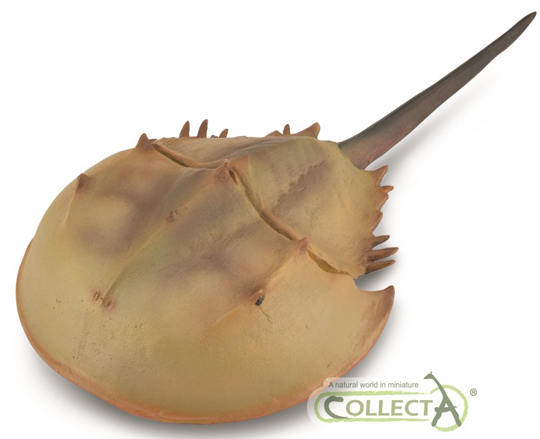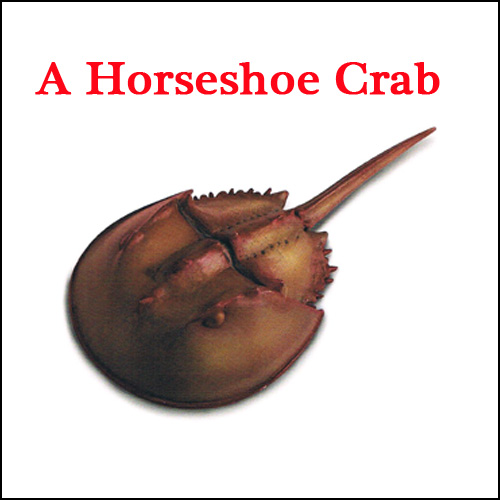The Important Role Enthusiastic Amateurs Play in Palaeontology
Last week Everything Dinosaur reported on the concerns being raised over the extensive amount of digging into cliffs on north Norfolk beaches by fossil collectors. Whilst we frown upon such activities and urge all fossil collectors to follow the fossil collecting code, today, we report on the significant contribution made to palaeontology by a couple of enthusiastic fossil hunters from Nova Scotia. Their dedication has resulted in a number of important discoveries, the latest being a new species of ancient horseshoe crab, which is known from just two specimens.
To read the article about concerns over coastal Norfolk fossil sites: Experts Fear for Safety of Fossils and Fossil Collectors.
Lower Carboniferous Sandstones and Silts of the Bay of Fundy
The Blue Beach area of the Bay of Fundy (Nova Scotia), is one of the most important Late Palaeozoic fossil locations in the world. The strata is being constantly eroded by the exceptionally powerful tides (a macro tidal environment) and the eroding cliffs are giving up the fossilised remains of animals and plants that lived in the very Early Carboniferous period (Lower Mississippian Epoch – Tournaisian faunal stage). The body and trace fossils found here record life in a estuarine environment bordered by dense swamps that existed some 360 million years ago.
Thanks to the efforts of husband and wife team Chris Mansky and Sonja Wood, tens of thousands of fossil specimens have been retrieved from the beach. The rocks have such significance as they preserve fossils of some of the very first tetrapods – primitive amphibians that were the first terrestrial vertebrates.
Paleolimulus woodae – Horseshoe Crab Fossil
Working in conjunction with scientists from the New Mexico Museum of Natural History and Science, an extremely rare horseshoe crab fossil has been identified and described as a new species. The species name honours Sonja, the ancient arthropod has been called Paleolimulus woodae (pronounced pay-leo-limb-mew-lus wood-i).
A Natural Goldmine for Fossils
Commenting on the significance of the fossil find, co-author of the scientific paper that has just been published in the academic journal “Neues Jahrbuch für Geologie und Paläontologie”, Chris Mansky stated:
“We’re sitting on an unrealised bonanza or mother-load of information. It’s a very small scarp that shows probably one of the most important pieces of evolutionary information.”
The CollectA Age of Dinosaurs Horseshoe Crab Model
CollectA have produced an excellent Horseshoe crab model.
To view the CollectA Age of Dinosaurs model range: CollectA Age of Dinosaurs Model Range.
The powerful tides scour the beach and cliffs twice a day exposing fossil material all year round. The work of Chris and Sonja is vital, as without their help, many important fossil specimens, such as the ten pence sized horseshoe crab fossil would be lost. The couple have run the Blue Beach Fossil Museum since 2002, and they have amassed a collection of some 90,000 lbs of rocks containing body fossils of early tetrapods, ancient fish, molluscs, as well as important trace fossils, preserving tracks in the mud made by both back-boned animals and invertebrates.
Romer’s Gap and All That
Horseshoe crabs are marine arthropods, (Order Xiphosurida, Family Limulidae), known as living fossils as they seem little changed since their evolutionary origins some 450 million years ago. A number of genera exist today, but populations are threatened due to habitat destruction and the removal of eggs for human consumption.
An Illustration of a Extant Horseshoe Crab
Picture credit: Everything Dinosaur
The Blue Beach location is regarded as one of the most important Lagerstätte (strata with an abundance of fossils), of the Late Palaeozoic. The Lower Carboniferous rocks are helping to provide scientists with information about vertebrates to fill in “Romer’s Gap”, a discontinuity in the fossil record between the end of the Devonian and the first fifteen million years of the Carboniferous, a time when terrestrial ecosystems were rapidly evolving and the first land animals with back-bones were becoming widespread. The gap in the geological record is named after the American palaeontologist Alfred Sherwood Romer who first recognised this discontinuity.
Explaining just how rare the horseshoe crab fossils are, Chris Mansky said:
“Out of the tens of thousands of fossils that have been gathered [from the Blue Beach area] only two were horseshoe crab.”
The fossil material including body impressions and tracks made by the horseshoe crabs in the soft mud are helping scientists to piece together more information about this ancient palaeoenvironment. Today, we pay tribute to Chris and Sonja whose efforts are helping scientists to learn more about a crucial period in the evolution of life on Earth.
Romer’s Gap – An Explanation
The gap in the fossil record that marks the beginning of the Carboniferous geological period. In sedimentary rocks fractionally older than Romer’s Gap palaeontologists have unearthed evidence of very primitive Devonian tetrapods , fish with fingers, lots of fingers. Tetrapod fossils found in slightly younger rocks provide evidence of Carboniferous tetrapods that all had five fingers and toes and they are much better adapted to terrestrial habitats.
Visit Everything Dinosaur’s website: Everything Dinosaur.








Leave A Comment